Rank Species | Genus Aralia Higher classification Spikenard | |
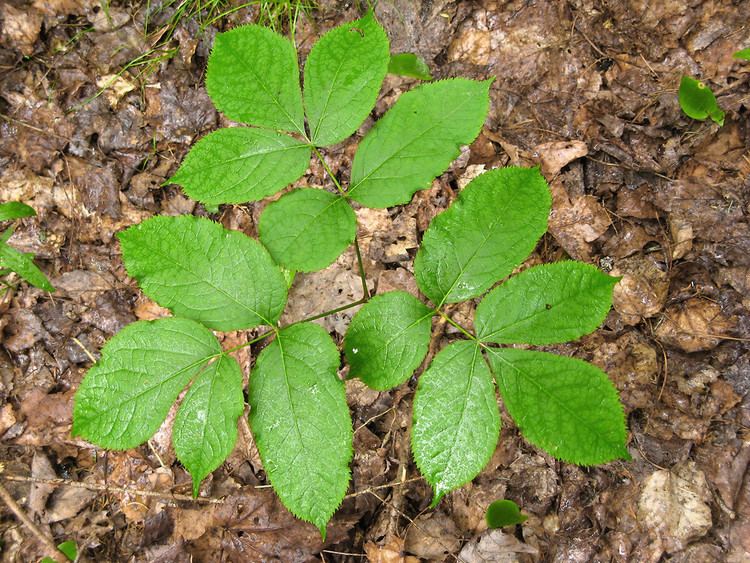 | ||
Similar Spikenard, Jamaica sarsaparilla, Maianthemum canadense, Aralia racemosa, Araliaceae | ||
Wild sarsaparilla aralia nudicaulis
Aralia nudicaulis (commonly wild sarsaparilla, false sarsaparilla, shot bush, small spikenard, wild liquorice, and rabbit root) is a flowering plant of northern and eastern North America which reaches a height of 30–60 cm (12–24 in) with creeping underground stems.
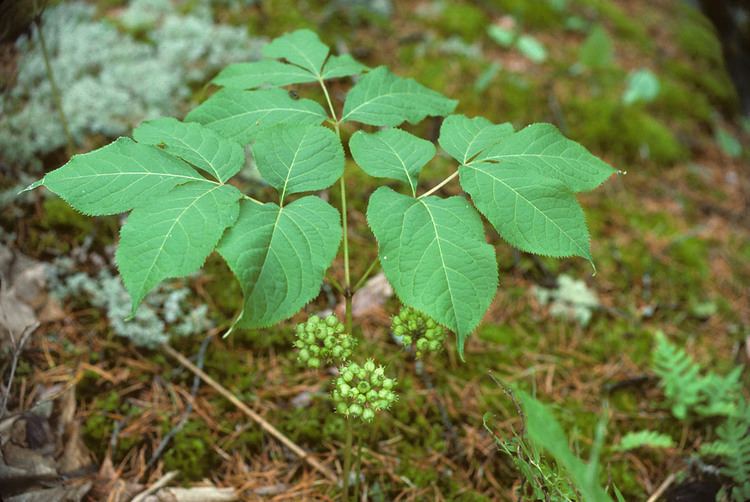
In the spring the underground stems produce compound leaves that are large and finely toothed. Tiny white flowers, typically in three, globe-shaped clusters 4–5 cm (1.6–2.0 in) wide, are produced on tall scapes that grow about the same height as the leaves. These bloom from May to July and develop into purple-black edible berries. The leaves go dormant in summer before the fruits ripen. The berries taste a little spicy and sweet.
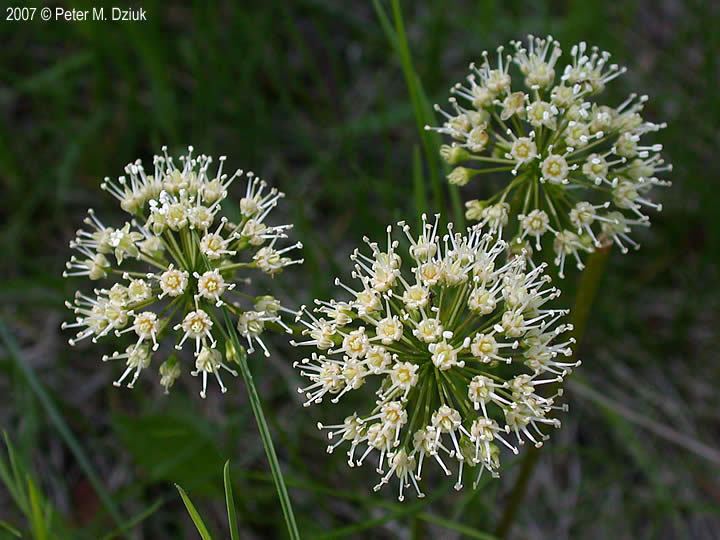
The stem of the plant grows straight up from the ground and divides into a whorl of 3 stems which branch up and out, each forming 3 to 7 (most often 5) pinnately compound leaflets; leaflets ovate, acute, serrate, green. Technically, all the leaflets on one plant are considered to be one entire leaf, and the stems that connect the leaflets are called rachis; this arrangement is called doubly compound. In some cases some of the leaflets are further completely subdivided, forming a triply compound pattern.
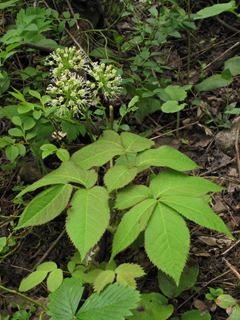
This species is similar to Aralia hispida (Bristly Sarsaparilla), which is a little larger with stems covered with bristly hairs, hence the name. The stems of A. nudicaulis are smooth.

The roots have been used as substitutes for true Sarsaparilla (Smilax sp.) in herbal medicine.
This plant is so common in certain ecologies that it is an indicator species for these Eastern Forests of North America: Northern Hardwood Forest, Beech-Maple Forest, and Oak-Hickory Forest.
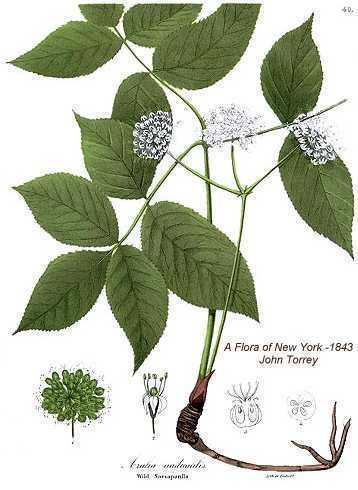
Because it sometimes grows with groups of 3 leaflets, it can be mistaken for poison ivy; the way to tell the difference is that Wild Sarsaparilla lacks a woody base and has fine teeth along the edges of the leaves.

